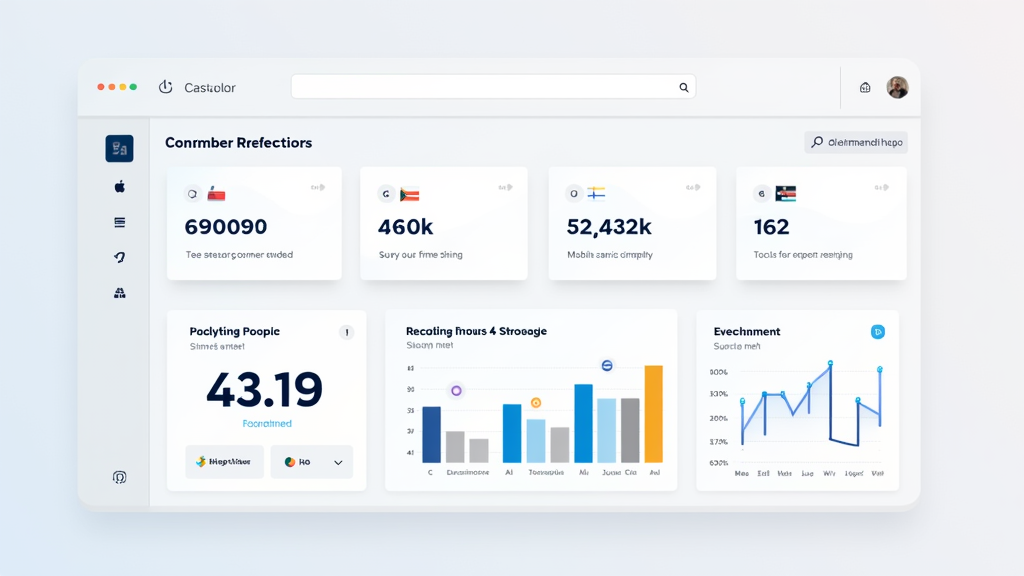Struggling to turn clicks into commissions? You’re not alone. For many beginner affiliate marketers, understanding conversion rates is the missing link between traffic and actual income. Whether you’re running a blog, online store, or digital campaign, tracking this metric helps you measure how effectively you turn website visitors into actual customers.
In this guide, we’ll break down what conversion rates really mean, why they matter in affiliate marketing, and how to use this knowledge to grow your online earnings with confidence.
If you’re new to Affiliate Marketing, be sure to read our Introduction to Affiliate Marketing: What Beginners Need to Know before diving in. It covers the core principles, benefits, and how affiliate marketing actually works—laying the foundation for building your first successful online business.
What Are Conversion Rates?

A conversion rate measures the percentage of visitors who take a desired action on your site. This could mean making a purchase, signing up for a newsletter, filling out a form, or clicking on an ad. To calculate conversion rate, you use a very straightforward formula: Divide the number of conversions by the total number of visitors, then multiply by 100 to get the percentage.
For example, if I have 1,000 visitors to my product page in one month and 30 of them complete a purchase, my conversion rate is 3%. That means 3% of people who land on that page actually buy something. This number gives me a clear idea of how my page is performing and where there might be room to improve.
Why Conversion Rates Matter In Affiliate Marketing
Conversion rates are directly tied to how much money you can potentially make from your website or online business. A higher conversion rate means more of your existing visitors become customers, clients, or subscribers, which can raise your overall earnings. Even a small increase in this number can have a real impact.
Let’s say I run an affiliate blog and currently average a 2% conversion rate, making $500 a month. If I manage to raise my conversion rate to 3% without increasing my visitor count, my monthly earnings could go up to $750. My traffic stayed the same, but my income improved just by helping a larger percentage of people complete their purchases.
This is one of the main reasons I focus on conversion rates whenever I look to grow my business; sometimes new traffic is harder to get, but improving conversions often delivers results much quicker.
Key Terms Explained
If you’re new to the idea of conversion rates, a few common terms pop up a lot. Breaking them down makes it easier to keep track:
- Conversion: Any action you want your visitor to complete, such as buying a product, signing up for an email list, or downloading an e-book.
- Conversion Funnel: The step by step path a visitor follows on your site before converting. For example, the funnel might move from a blog post to a product page, then to the checkout page.
- Call to Action (CTA): A button or link that encourages visitors to take your desired action, like “Buy Now” or “Join Free.”
- Landing Page: The web page specifically designed to encourage a certain conversion, often used in ads, emails, or promotions.
- Bounce Rate: The percentage of visitors who leave your site without taking any action or viewing more than one page.
Understanding these basic terms will help you design better pages and campaigns, when you focus on what each step in the marketing process is trying to achieve. With time and consistency, you will get comfortable with these concepts which will make it easier to grow your results.
Wondering what other terms like cookie window, CTR, or conversion rate mean? Don’t worry—our Glossary of Key Affiliate Marketing Terms and 10 Basic Terms Every Affiliate Marketer Should Know will help you quickly get up to speed. They’re essential reads for decoding the jargon and building confidence as you navigate your first affiliate website setup.
Strategies to Improve Conversion Rates
One of the biggest challenges beginners face is figuring out how to improve affiliate conversion rates. It starts with understanding your audience’s needs, optimizing landing pages for clarity, and using persuasive calls-to-action. By consistently testing and refining your content and offers, even small tweaks can lead to a noticeable boost in conversions.
You don’t need a huge budget or technical skills to see a boost to your conversion rates. Small changes can sometimes make a big difference. Here’s a recommended process to follow:
- Review Your Traffic Data: Start by looking at your site analytics- this can be data on Google Analytics or Bing Webmaster Tools. Figure out which pages are performing well and which have lower conversion rates.
- Optimize Important Pages: Focus on improving high traffic pages first, since a boost in conversion here will have the biggest impact.
- Strengthen Your CTAs: Make sure your buttons and links are clear and inviting. Changing button text to simple phrases like “Get Started Free” or “See Plans” can have a significant impact.
- Streamline Your Funnel: Remove unnecessary steps that could distract visitors from converting. The simpler the process, the better.
- Test and Experiment: Try different colors, headlines, or layouts using A/B testing to stumble upon what works best.
Regularly making these kinds of tweaks can help push your earnings upward over time, without always relying on new visitors. Over time, these small improvements add up quickly and most people can track down some easy wins by just reviewing their site from a fresh perspective.
Factors That Affect Conversion Rates (and How to Tackle Them)
Many things can influence whether or not visitors convert. Here are a few main issues I’ve come across and some practical ways to handle them:
- Page Load Speed: If your website loads slowly, people are more likely to give up and leave. Using image compression and reliable hosting to make your site faster made a real impact for me.
- Mobile Experience: More people use their phones to browse and shop now. A site that’s easy to use on mobile makes a big difference. Double check your buttons are easy to tap and text is easy to read.
- Trust Signals: Adding customer reviews, secure payment badges, and privacy assurances can ease concerns and give a boost to conversions.
- Clarity of Offer: Make sure visitors understand exactly what you’re offering. Clear headlines, pricing, and benefits help prevent confusion.
- Relevant Traffic: If you’re getting the wrong audience to your site, your conversion rate will be low no matter what you do. Focus your marketing on the people most likely to be interested in what you have.
By regularly identifying and fixing these issues you will notice more predictable, steady growth in your online business. Tackling these problems upfront saves tons of time and pain down the line, making every marketing move more efficient.
If you’re are just getting started in your affiliate marketing journey, you can follow this step-by-step guide to launching your first affiliate website to get your website setup in no time.
Conversion Rate Benchmarks
Industry conversion rates can vary depending on your niche, but most e-commerce sites average around 2-3%. Email lists might see rates of 5% or higher. Don’t get stuck comparing your site to huge brands. Instead, track your own improvement and set personal goals based on your starting point. Even a half percent bump can make a surprising difference over several months.
Proven Affiliate Marketing Tips to Increase Conversion Rates and Earnings
Effective affiliate marketing conversion optimization involves aligning your traffic source with your offer and ensuring a seamless user experience from click to purchase. This means optimizing load speed, removing distractions, and using trust-building elements like testimonials or guarantees to increase buyer confidence.
Once you’ve tackled the basics, a few more advanced strategies can help you keep growing:
Personalization: Show visitors products or offers based on what they viewed before. Personalized recommendations will help improve email open rates and and sales are likely to go up.
Exit Intent Offers: Pop ups that appear when someone is about to leave can bring back lost sales. You are likely to capture many extra subscribers each month using this technique.
Retargeting: Use simple ad campaigns to follow up with visitors who didn’t convert the first time. Often, it takes a second look to get someone to take action.
Customer Feedback: Ask visitors or customers why they did or didn’t convert. Simple feedback can help you capture useful feedback that will teach you things you would never have guessed on you own content. As they say, feedback is a gift!
Continuous Testing: Even after big improvements, you can keep rotating headlines, images, and offers and evaluating their impact. There’s always room to grow, and what works best often changes over time.
In addition, don’t forget about building out more trust on your site. Showing real photos, giving behind the scenes info about your company, or showcasing user stories can go a long way in moving visitors toward making a purchase or signing up for your list. People are more likely to say yes to a real, approachable site than something that feels generic.
Where Conversion Rate Matters in Real Life
The concepts behind conversion rates apply well beyond online stores or affiliate sites. Here are a few places I’ve found these principles add a lot of value:
- Blog Monetization: Improving conversion rate on email signups helped me build a bigger list, which then generated more revenue from future promotions.
- Landing Pages for Courses: A clear headline, social proof, and risk free guarantee boosted conversions on my course launches.
- Service Bookings: Adding an easy scheduler and customer testimonials helped my local clients book consultations faster.
Whatever type of site you operate, focusing on conversion rate improvement drives more results from your traffic and time. It’s worth saying again: You don’t always need more visitors—you just need to get more out of the ones you’ve already attracted. Keep experimenting and see which changes move your numbers in the right direction.
Pro Tip: If your goal is to increase affiliate sales through better conversion rates, then shifting your focus from quantity of traffic to quality is key. Targeting the right audience with the right message—paired with a strong understanding of conversion principles—can dramatically enhance your affiliate earnings over time.
Frequently Asked Questions About Conversion Rates
Question: What’s considered a “good” conversion rate?
Answer: It depends on your industry and traffic quality. Most e-commerce sites aim for 2-3%. For email opt ins, 5-10% can indicate good results. Always track your own improvement more than following averages.
Question: Does more traffic guarantee higher earnings?
Answer: Not always. If your conversion rate is low, extra traffic might not help much. Improving your conversion rate means you earn more from the visitors you already get.
Question: What’s the fastest way to increase my conversion rate?
Answer: Focus on your call to action and remove distractions around it. Test variations, such as button text or colors, and make sure your offer is super clear. These changes are likely to give you the quickest results.
Final Thoughts
Understanding and optimizing your conversion rates is one of the most powerful moves you can make as an affiliate marketer. Whether you’re just starting out or scaling your strategy, focusing on conversion rate improvement will help turn passive clicks into consistent commissions. From tracking performance to refining your funnels, small changes can drive serious growth. Keep learning, keep testing, and always align your strategy with your audience’s needs—that’s the real key to affiliate marketing success.



